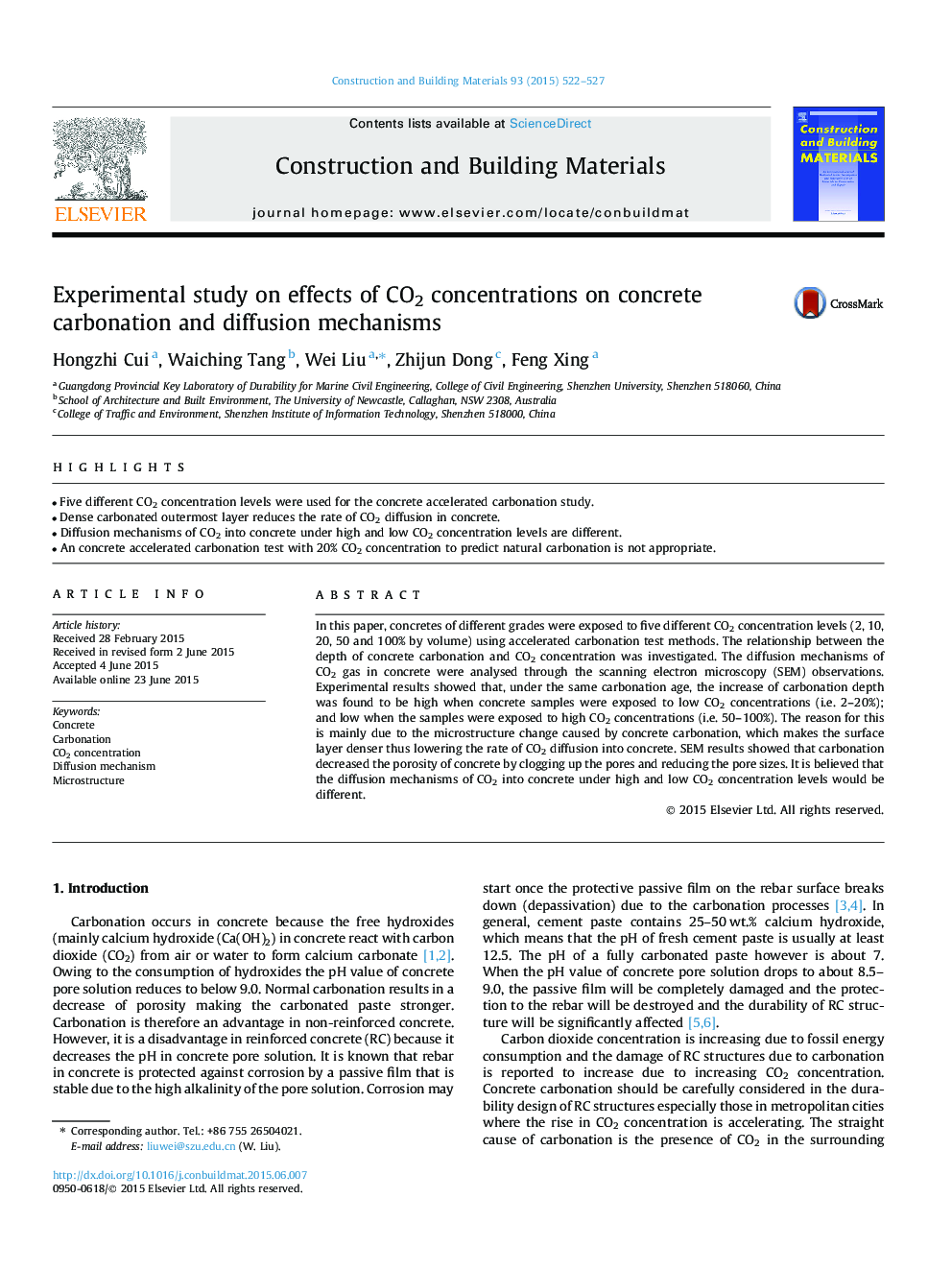| Article ID | Journal | Published Year | Pages | File Type |
|---|---|---|---|---|
| 6720572 | Construction and Building Materials | 2015 | 6 Pages |
Abstract
In this paper, concretes of different grades were exposed to five different CO2 concentration levels (2, 10, 20, 50 and 100% by volume) using accelerated carbonation test methods. The relationship between the depth of concrete carbonation and CO2 concentration was investigated. The diffusion mechanisms of CO2 gas in concrete were analysed through the scanning electron microscopy (SEM) observations. Experimental results showed that, under the same carbonation age, the increase of carbonation depth was found to be high when concrete samples were exposed to low CO2 concentrations (i.e. 2-20%); and low when the samples were exposed to high CO2 concentrations (i.e. 50-100%). The reason for this is mainly due to the microstructure change caused by concrete carbonation, which makes the surface layer denser thus lowering the rate of CO2 diffusion into concrete. SEM results showed that carbonation decreased the porosity of concrete by clogging up the pores and reducing the pore sizes. It is believed that the diffusion mechanisms of CO2 into concrete under high and low CO2 concentration levels would be different.
Related Topics
Physical Sciences and Engineering
Engineering
Civil and Structural Engineering
Authors
Hongzhi Cui, Waiching Tang, Wei Liu, Zhijun Dong, Feng Xing,
